Spotlight On David Holloway
Oct 15, 2011
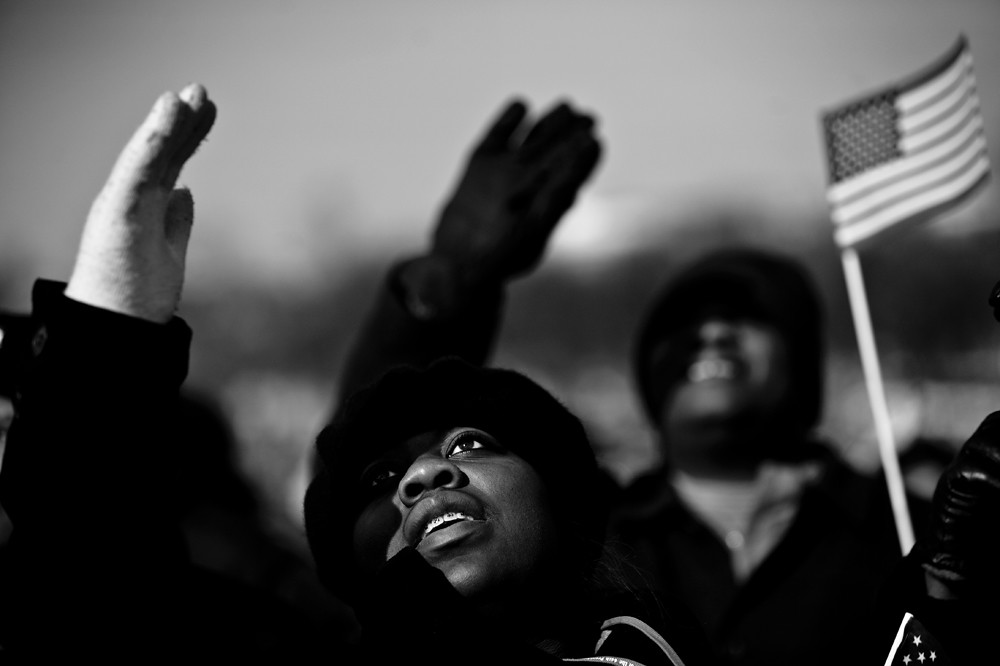
TID:
Thanks David, for taking the time to dive into your thoughts and actions behind this image. Can you run us through the days leading up to Obama's inauguration and your management of plans?
David S. Holloway:
I had a couple of potential assignments for the day, but I turned them down because nothing I was offered seemed very compelling to me. I thought I would put my effort towards making something personal or more substantial. I hadn’t committed to any idea, but I had a list of potential things and I was just going to see what came together.
The ideas weren’t anything special. I have a theory that when photographing anything, I always should throw out the first idea because it probably will be a bit generic. At first I thought I should do a project about the difficulty of getting around that day. Anytime there is a big event on the Mall, travel in that part of the District can be tough. This had the potential to be one of the worst - they close down Pennsylvania Ave for the Presidential motorcade. I bounced the visuals of the idea around as I walked from my apartment to the mall with friends. There was a steady flow of people that bottlenecked as you crossed Pennsylvania Ave.
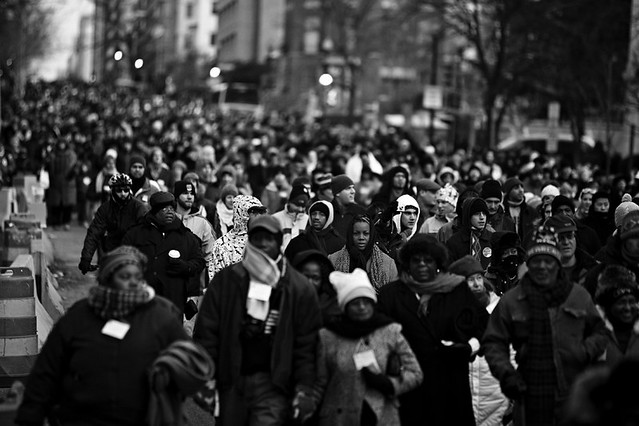
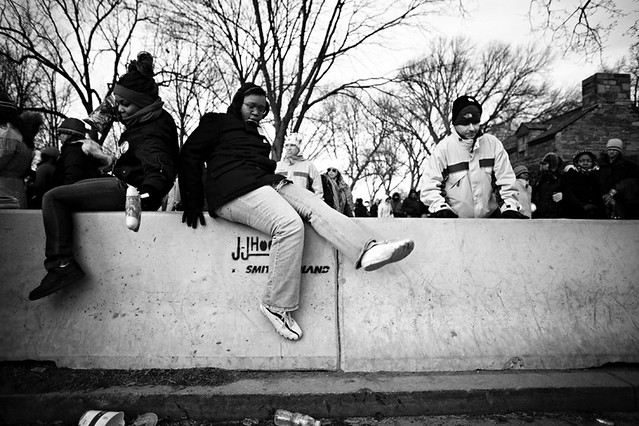
When we got on the National Mall, making our way east, the crowd got thick. I started thinking about trying to shoot the logistics of an event like this; it was going to take half the day, so where would people go to the bathroom? What would they eat? I also had an offshoot idea of documenting the waste that a crowd like this generates. I liked that idea, but I was inspired by the day and I thought I’d be disappointed if the collection of images I came out of it with was focused on the problems with crowds like this.
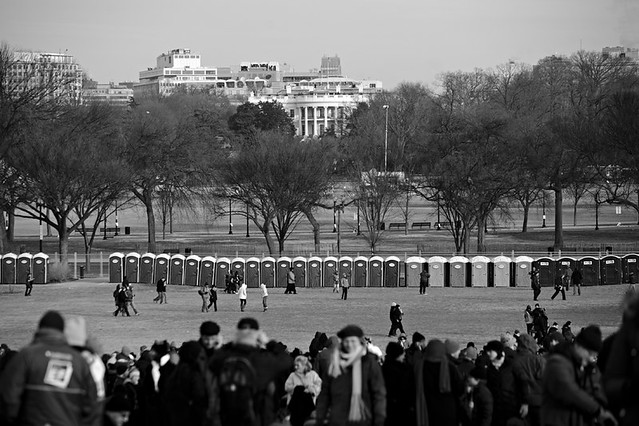
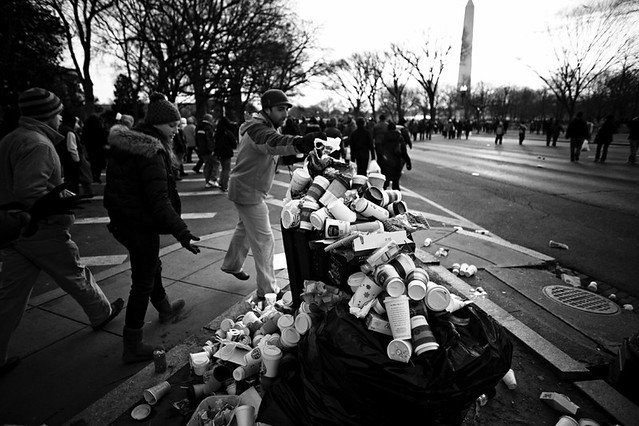
I was feeling pretty emotional. I was thrilled to be there and I knew I wanted to find emotion, or I wanted some visual metaphor for what this inauguration meant and what the campaign meant. I was thinking of the campaign slogan “hope” but I couldn’t figure out how to convey that. I was shooting these masses of people but the images weren’t what I was feeling. I was trying to show the size of it all.
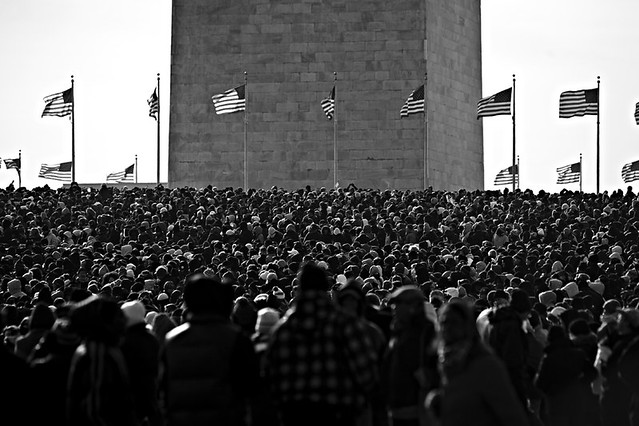
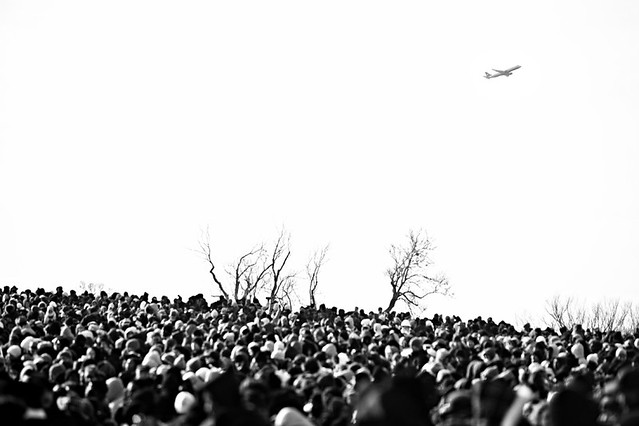
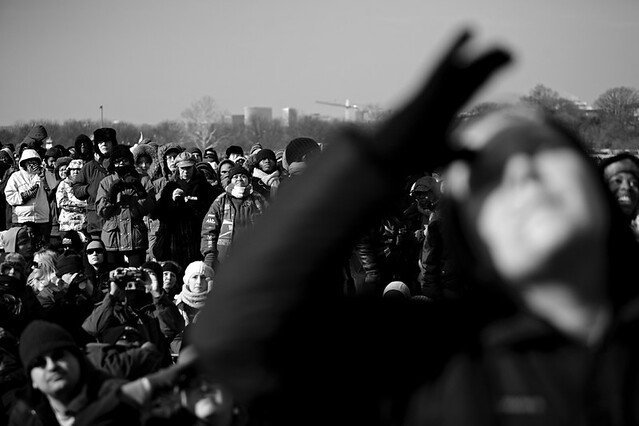
TID:
The focus of your featured image is much more abstract than the previous scenarios you've been describing. Most of the TID guest posts have been about how logistically photographers secured access to a situation or emotionally approached a subject - I'd like to hear more about your mental process and thoughts in trying to capture a theme?
DSH:
It was this setting where all of these people were sharing this experience together. We all were huddled together - it was freezing that morning. Everyone had made the early morning walk together. It was our pilgrimage. There was this palpable joy and it wasn’t coming through in my pictures. They just seemed too literal, so I tried to shoot smaller groups of people, where their expressions were more obvious. This just wasn’t moving me either.

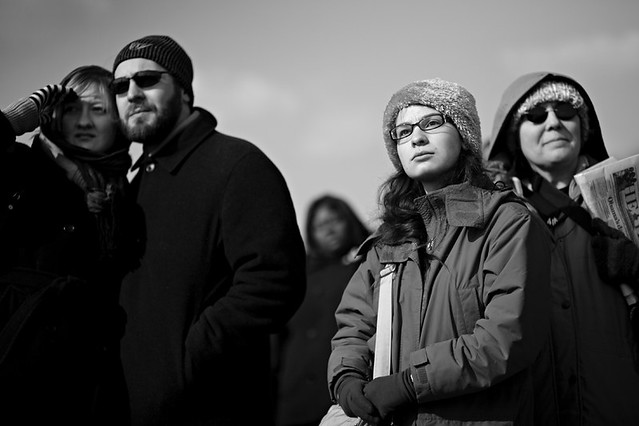
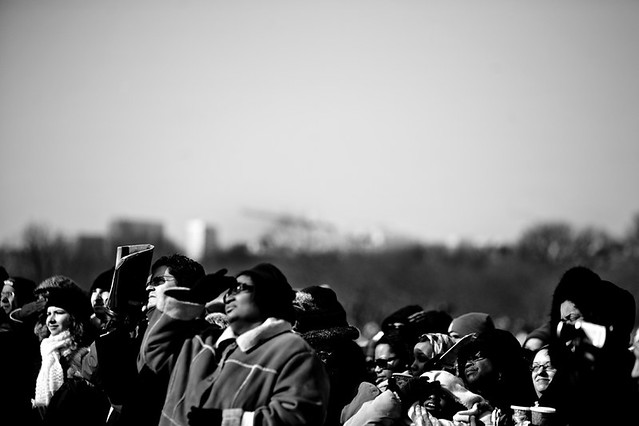
I was having a lot of difficulty with it, my images weren’t matching my mood. I had convinced myself that I didn’t need to make anything epic because I wasn’t on assignment, I was there to enjoy the time. I was enjoying it, enjoying the experience with friends as we made photos. We were freezing, but laughing. Obama was about to come out for his swearing in. I had basically given up on shooting, then I saw a woman shield her eyes and look up at one of the jumbotrons. She was beaming with pride and I recognized it as exactly what I had been hoping for.

It was a mirror of how I was feeling. It just suddenly made sense. I knew I had to isolate her more, so I pulled out the longest lens I had and the image was perfect. It had everything I wanted. Then for the rest of the Obama’s ceremony I just shot tight frames of people shielding their eyes from the sun. The gesture reminded me of people witnessing during a revival. There were hundreds of them all gazing upward, eyes shielded and bursting with pride. The experience was universal but they were all lost in their own moments.
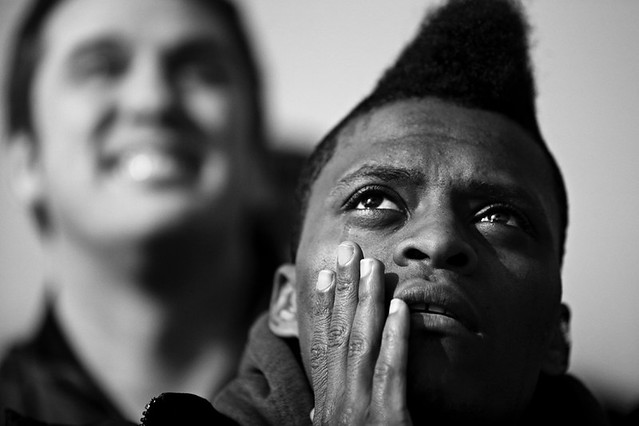
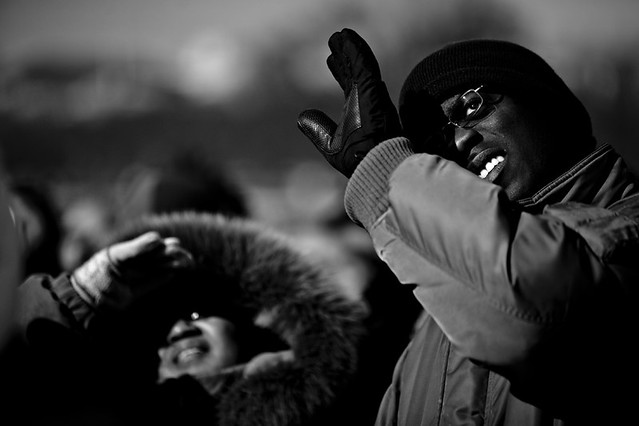
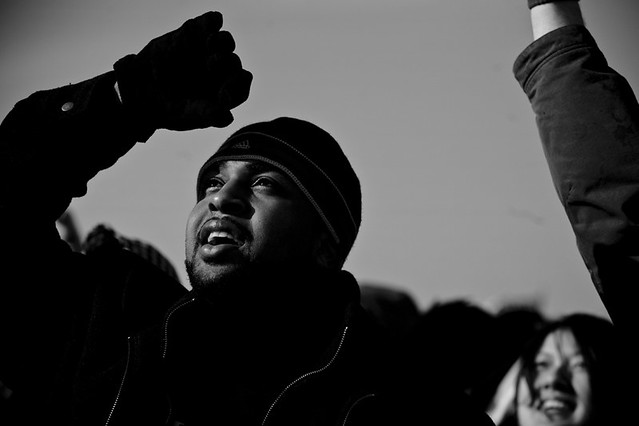
TID:
Personally, you and I have talked a lot about using photography to explore themes and much more abstract aspects than documenting raw facts. I know one of your favorite photographers is Hiroshi Sugimoto, whose images resonate as much (if not more) for their thematic vision or "manifesto" as their composition and content. Can you speak about how you try to apply symbolism and deeper abstract meaning to images in general, and this situation overall?
DH:
I’ve always thought of myself as a very literal photographer. My images had traditionally been very straightforward. In the past several years I’ve had this creative shift towards the work of photographers whose work is more about their own ideas. Just studying these sorts of photographers has shifted the direction of a lot of my work. One of the ways I've tried to pursue this has been to make personal notes about my photographs instead of just relying on the caption. I want others to be able to look back at my work and know what I was thinking.
TID:
Such as?
DSH:
Here is what I put in my journal for that day.
“i went to the mall just to be there. i was hanging out with friends and shooting some pictures, just documenting the moment for myself. the energy was incredible. i talked to strangers from all over. they shared their joy. they told me they love my city. they talked about hope. they talked about this change in America like people talk about their salvation. this is a religious experience. from the moments before Obama came out, through the swearing in and his speech this amazing thing happened, i noticed all of these people sharing this common gesture. they were raising their hand to shield their eyes from the midday sun as they tried to catch a glimpse of him on the jumbotrons. it reminded me of other religious gestures. to them this was what they had been waiting for, this was the second coming. on this day at this moment, the faithful raised a hand to shield their gaze and witnessed a majestic moment. i’m not a believer, but i know this is what my city needs right now. i feel blessed to have been there.”
++++++
David S. Holloway, 39, is based in New York City Coming from a long line of farmers, carpenters, truck drivers and mechanics, David S. Holloway discovered a career in photojournalism while failing to find one in skateboarding. His curiosity has taken him from the farmlands and forests of his home to photograph the first multiparty elections in Tanzania, the SARS outbreak in Toronto and the punk rock and politics of Washington, D.C.
Currently David’s work explores the tensions inherent of social issues such as race, poverty, violence and the struggle of working-class Americans. His work has been published in Time, Newsweek, Life, Stern, Rolling Stone and Spin. His clients include the Discovery Channel, the Jane Goodall Institute, CARE USA and the History Channel.
David was a 2005 recipient of the Getty Images Editorial Grants for Photography, as well as a top-five finalist for both the 2006 Dorothea Lange-Paul Taylor Prize and the 2006 Alexia Foundation Grant. In 2006, he was awarded an honorable mention in the first New Documentarian Award for a Long Term Project. He has also received numerous awards from the White House News Photographers Association and American Photography.
For more of his work, visit his website: www.davidscottholloway.com/
+++++
Next week on TID, we'll take a look at this image by Rich-Jospeph Facun:
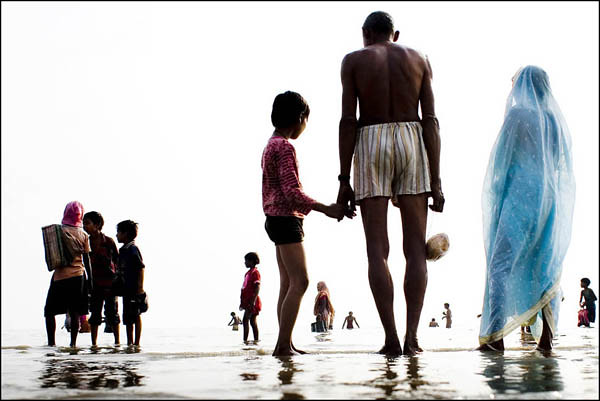
As always, if you have a suggestion of someone, or an image you
want to know more about, contact Ross Taylor at: [email protected].
For FAQ about the blog see here:
http://imagedeconstructedfaq.blogspot.com/